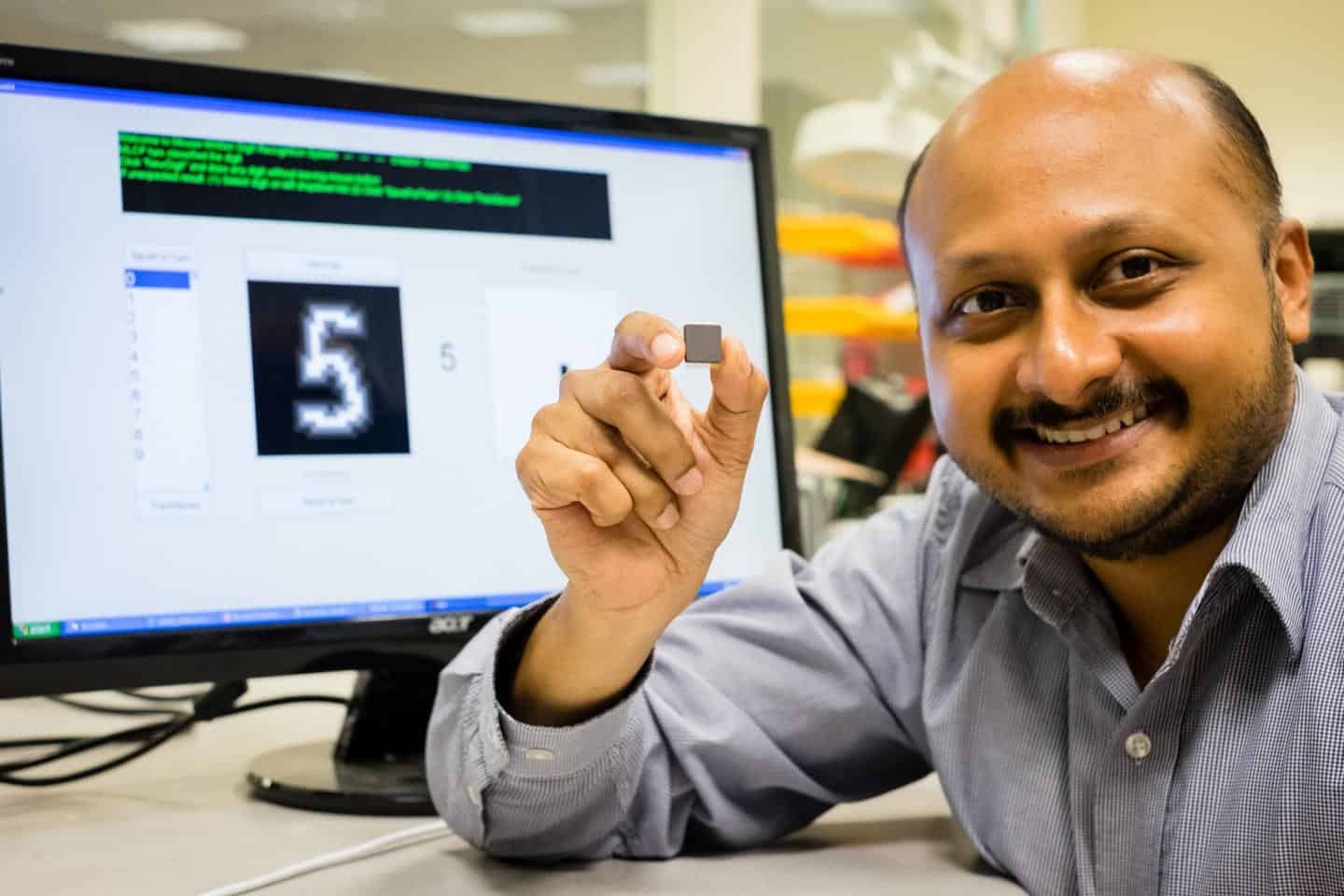
Parkinson’s disease sufferers and amputees could be among those to benefit from a low-power microchip that can be implanted in the brain and send signals wirelessly to implants and prosthetics. Developed at Singapore’s Nanyang Technical University (NTU), the chip is claimed to be 100 times more efficient than existing devices to process and decode the signals sent and received by the brain.
The interface between the brain and electronic neural implants is always complex. Parkinson’s patients sometimes have implants that send electrical signals to calm the debilitating tremors and stiffness associated with the disease; paraplegics and amputees can have implants which control the movement of artificial limbs or devices to help with movement. But these depend on intercepting the signals sent by the brain and translating them into binary signals that the implant or external device can understand.
The brain produces huge amounts of data; the translation devices have to receive and send through many channels, often numbering thousands. This can make the translation devices cumbersome, and they often need a battery. This reduces the size available for the electronics, which can compromise the functionality of the device; for example, it can make it impossible for the device to record the history of brain activity, and their accuracy is reduced.
For patients with prostheses, the implanted translation devices are often linked to an external processing computer by wires coming out of the head. This is inconvenient and, worse, can lead to life-threatening infection.
The NTU team has taken a different approach to the problem. Rather than increasing the number of channels their chip can work with, they reduced the amount of data it needed to send by analysing the patterns of the data it receives from the brain and spot abnormal or unusual patterns. The devices can process and analyse the data on site, before sending back important details wirelessly to a small external receiver in a compressed package, instead of sending the whole data stream. This will reduce data usage by over a thousand times.
"What we have developed is a very versatile smart chip that can process data, analyse patterns and spot the difference," explained team leader, assistant professor Arindam Basu of NTU’s VIRTUS IC Design Centre of Excellence. Animal tests indicate that the chip can decode signals from the arm and hand with 95% accuracy.
The chip measures just 5mm square. "It is about a hundred times more efficient than current processing chips on the market,” Basu claimed. “It will lead to more compact medical wearable devices, such as portable ECG monitoring devices and neural implants, since we no longer need large batteries to power them."
The device could also be useful for non-medical applications, such as Internet of Things-enabled devices. For example, in a remote video camera, the chip can be programmed to send a video back to the servers only when a specific type of car or something out of the ordinary is detected, such as an intruder. With an increasing number of devices, in factories, for example, sending and receiving large amounts of data, this will assist significantly in keeping network traffic down to manageable levels.
The NTU team explains their invention and how it works in a paper in the journal IEEE Transactions on Biomedical Circuits & Systems, and are licensing it through NTU’s IP commercialisation arm.




Glasgow trial explores AR cues for autonomous road safety
They've ploughed into a few vulnerable road users in the past. Making that less likely will make it spectacularly easy to stop the traffic for...